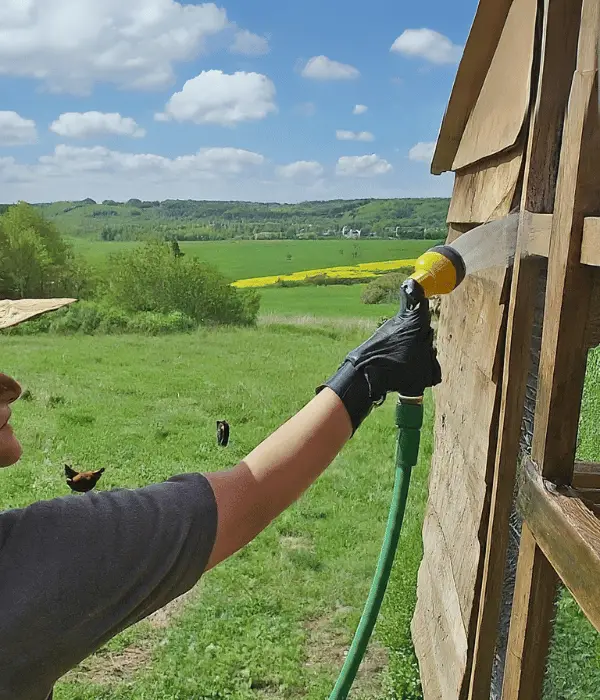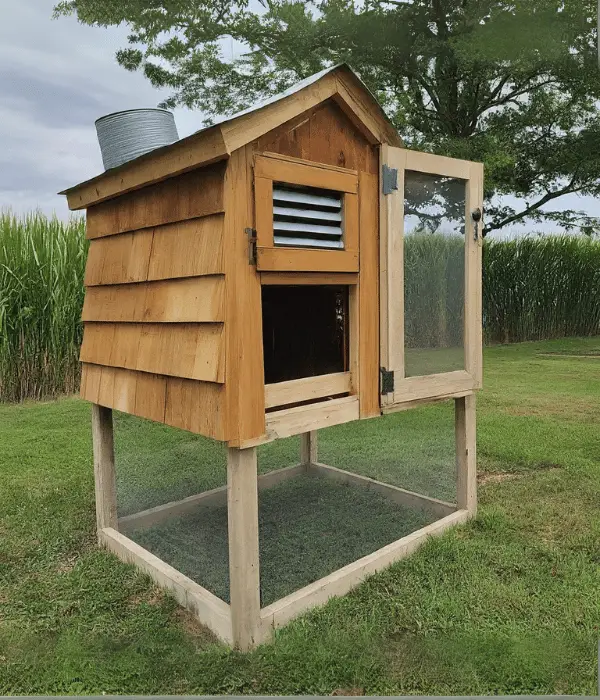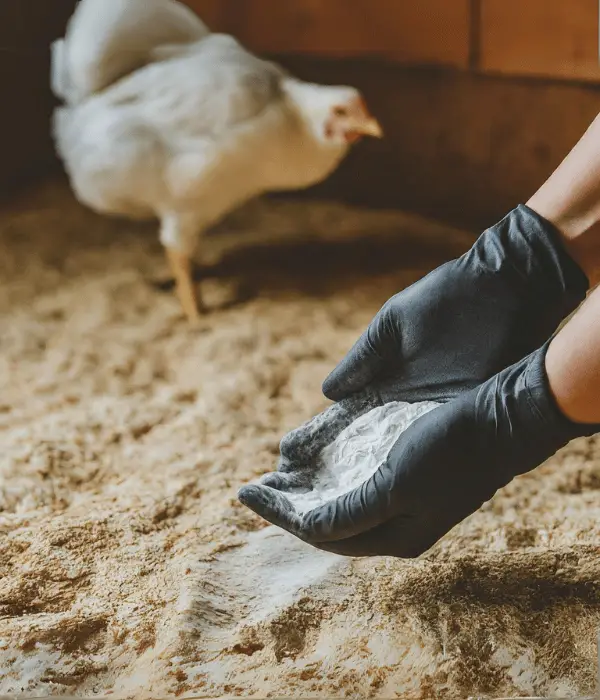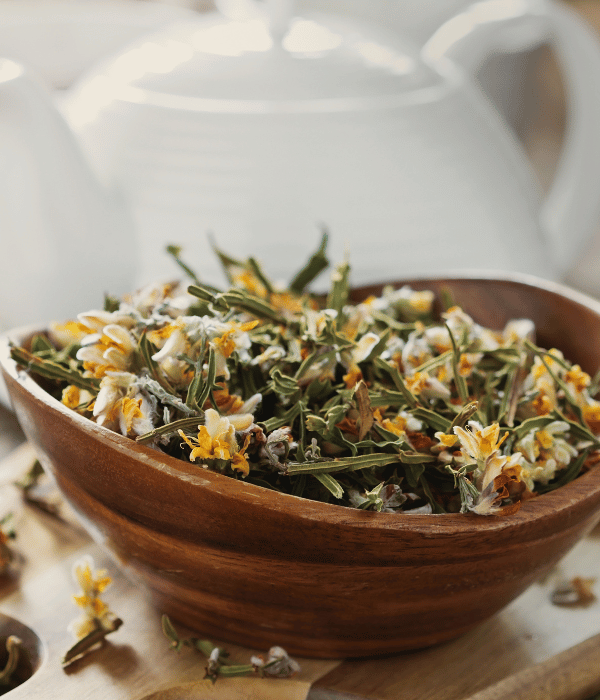Do you want to get rid of flies in your chicken coop? If yes, this guide will help you with that.
Getting rid of flies in the chicken coop is most important for flock health and comfort. Flies irritate chickens and spread diseases.
They also make coops dirty. Keeping flies away is hard work, mainly in warm and moisture months when flies are most active.
But, with proper steps, you can cut the number of flies and make a cleaner space for your chickens.
Flies come to chicken coops because of manure (chicken poop), food scraps, and dampness.
The goal is to make the coop unfriendly to flies by removing their breeding grounds. This needs regular cleaning, using traps, and natural or chemical repellents.
This guide shows seven best ways to remove flies from chicken coops. These methods are practical, cost-saving, and safe for chickens.
Whether you have a small backyard flock or a big farm, these tips help keep flies away.
Here are seven ways to keep flies out of your chicken coop:
1. Cleaning The Chicken Coop and Surroundings
It’s vital to clean a chicken coop well to get rid of flies. Flies like chicken coops because of manure bedding, food scraps, and moisture which help them breed. Cleaning often and well makes the area less appealing for flies and their eggs.
How to clean different part of the chicken coop to get rid of flies:
Inside the Coop:
Daily: Remove chicken poop, leftover food, and wet bedding every day. These attract flies and allow them to lay eggs.
Weekly: Once a week, remove all chicken coop floor bedding and clean surfaces thoroughly. Use a brush and mild soap and water to clean floors, walls, and roosting perches. Rinse and let fully dry before adding fresh bedding.
Monthly: You also need a deep cleaning monthly. Take out all bedding and accessories, scrub all surfaces with disinfectant, and rinse well. Let the coop dry completely before replacing bedding and items.
Also read: Best odor eliminator sprays for chickens

Outside the Coop:
Remove debris: Clear away any manure, food scraps, and other debris around the coop. Flies can breed in these areas and easily get into the coop.
Run Care: Regularly rake and remove droppings and leftover food in the run area. This prevents flies from breeding in the run, where chickens spend lots of time during foraging.
Also read: Best chicken coop rake for cleaning
Surrounding Areas:
Yard Upkeep: Keep the areas around the coop clean, with no standing water or decaying matter. Regularly mow and remove waste materials.
Managing Compost: If you use chicken manure for composting, do it far from the coop area. Make sure the compost pile is properly taken care of. Turning the compost often helps it break down faster and cuts down on flies breeding there.
By keeping things clean inside and outside the coop, you disrupt the life cycle of flies. This lowers their numbers and makes a healthier place for your chickens.
Doing cleaning routines often is key for stopping flies and keeping your flock in good health.
Also read: The best spot to place your chicken coop
2. Providing Proper Ventilation In the Chicken Coop and Run Area
Keeping a chicken coop well-ventilated is key to controlling flies. Good airflow reduces wetness and stuffiness, making the space less appealing to flies that thrive in damp, warm spots.
Here’s how airflow helps and how to get it:
How does Air Flow help?
Lowers Wetness: Flies like damp places to lay eggs. Proper airflow keeps the coop dry by reducing moisture buildup from chicken poop, spilled water, and chicken breath.
Cuts Down Smells: Chicken droppings release ammonia fumes with a strong smell that draws flies. Airflow helps clear out those fumes, reducing fly-attracting odors.
Enhances Circulation: Constant air movement prevents still pockets where flies can breed. It also helps keep the coop cooler, especially in hot months when flies are most active.

Also read: Best chicken coop fans for ventilation
How To Provide Ventilation In Chicken Coop?
Flies spread illness, so limiting them is crucial for chicken health and egg safety. With some simple ventilation, your coop can stay drier, fresher, and less fly-friendly.
Install vents high on walls near roofs to let hot, humid air escape. Add lower vents for cooler airflow. Cover all vents with mesh to keep predators away.
For hot weather, open windows to increase airflow. Cover windows with fine mesh to stop flies and insects from entering.
In larger coops with poor airflow, add exhaust fans. They remove humid air and bring fresh air inside.
A slanted or peaked chicken coop roof helps hot air rise and exit through roof vents for natural ventilation. A roof with a slant can help air move. Hot air can go out from vents.
Have a lot of open space in the run. This allows air to move around. Use wire or mesh fences. This keeps the run safe, but let’s air go through.
Also read: The best chicken coop fencing ideas
Maintenance in Ventilation System
Check and clean the vents and fans often. Make sure they are not blocked by dirt. Change vents in different seasons to control airflow and warmth.
Having good airflow and keeping things clean will help keep flies away. This makes a better home for your chickens.
3. Using Fly Traps
Using fly traps in and around a chicken coop is a good way to cut down on flies. You can place these traps inside the coop and the run to catch and kill flies, making things better for your chickens.
How Do Fly Traps Help?
Fly traps quickly lower the number of adult flies. By trapping and killing them, the traps stop flies from breeding and laying eggs, breaking their life cycle.
These fly traps are used in spots where flies gather most, like near manure piles, feeders, waterers and in the run. This focused approach tackles the problem at the source.
Most fly traps, both store-bought and homemade, are safe to use around chickens. This means no harmful chemicals go into the chickens’ space.
Sticky Traps
These traps have a sticky surface that flies get stuck on when they land. Hang them where flies are most active. Replace regularly when full of flies.
Baited Traps
These traps use lures like pheromones or food smells to attract flies into a container they can’t escape. Place them around the coop and run, especially near entry points and high-fly areas.
Follow setup and disposal instructions:
- Mix simple things like sugar, water, and vinegar in a jar. Add dish soap drops to break the surface tension, so flies drown when landing.
- To make a fly trap, fill a jar with water, sugar, and vinegar. Leave some space at the top. Poke holes in the lid big enough for flies to get in, but not out.
- Put the jars in areas with many flies in the coop and run. Empty and refill the traps often to keep them working well.
- Pour a mix of water, sugar, and vinegar in a jar, leaving space at the top. Punch holes in the lid large enough for flies to enter but not leave.
- Place jars in high fly traffic areas inside the coop and run. Regularly empty and refill traps to maintain effectiveness.
Placement and Maintenance
Place fly traps inside the coop and run where flies gather. Keep traps out of chickens’ reach so they can’t disturb them.
Set up fly traps in both the coop and run, targeting fly hotspots. Position traps where chickens can’t access and knock them over.
Check and swap out traps frequently to keep them working properly. Clean and disinfect areas near traps to avoid buildup that could attract flies elsewhere.
Regularly inspect and replace traps to maintain effectiveness. Clean and sanitize trap surroundings to prevent attractant buildup that could lure flies away.
Using a mix of store-bought and DIY fly traps can significantly reduce the fly population around your chicken coop, creating a healthier space for your flock.
4. Adding Natural Predators In Chicken Coop
Adding animals that eat flies to a chicken coop can help lower the number of flies. These animals are called natural predators.
They feed on fly larvae and adult flies. This way, you don’t need to use chemicals that can harm chickens or the environment.
Here’s how natural predators work to control flies:
How Natural Predators Help?
Natural Control: Natural predators like insects and chickens eat fly larvae and adult flies. These controls fly numbers without using harmful chemicals.
Long-Term Solution: Once natural predators are present, they keep controlling flies over time. This provides an ongoing, sustainable solution.
Healthier Environment: Fewer flies means diseases and parasites spread less. This leads to a healthier space for your chickens.
Wasp Helpers: Some wasps, like the parasitic wasp, lay eggs in fly pupae. The wasp babies eat the fly pupae, so adult flies can’t grow. Put these wasps near your coop, where flies like to make their homes.
Beetle Buddies: Hister beetles eat fly eggs and babies. Put these beetles in the bedding and manure piles, where fly babies live.
Get Them: Buy good bugs from a trusted seller. Let them go where flies hang out, like the supplier says. Watch them and add more bugs if needed to control flies.
Allow chickens to wander spots where flies breed, like compost heaps or manure stacks. They naturally scratch and peck, eating fly larvae and flies.
Move chickens between yard or garden sections, letting them hunt fly larvae and adults. This breaks the fly breeding cycle.
Open secure coop and run zones for chickens to roam safely. Regularly shift them to maximize foraging for fly control.
5. Using Diatomaceous Earth In Coop and Run
Using diatomaceous earth dust in your chicken house helps get rid of flies safely. diatomaceous earth is a powder made from old algae.
You can use it in the correct way to get rid of flies in your chicken coop, making a better home for your hens.
Also read: Know all about diatomaceous earth for chickens
How does diatomaceous earth help?
DE dries up bugs by taking away their outer oils. These kills fly babies before they grow up.
Food-safe diatomaceous earth won’t hurt chickens if used correctly. It controls pests without bad chemicals, keeping your chickens and yard clean.
You can put diatomaceous earth in many coop places like bedding and nest boxes to stop bugs everywhere.
I found diatomaceous earth really helped control flies in our coop last summer. The chickens didn’t seem bothered by it at all.
Sprinkling a little in the bedding every few days kept fly numbers way down compared to before. It was an easy, natural solution that worked great.
Use food-grade diatomaceous earth because other types may have harmful. Food-grade diatomaceous earth is safe for pets and people.

DE Application In Chicken Coop To Get Rid Of Flies
Wear a mask and gloves when using diatomaceous earth. The small bits can irritate your nose and throat if breathed in, though diatomaceous earth is safe.
Take out old bedding from the coop. Sprinkle a thin layer of diatomaceous earth on the coop floor, mainly in wet spots. Put new bedding over it, then another diatomaceous earth layer on top.
For nesting boxes, put a light diatomaceous earth layer at the bottom before adding nesting stuff. This helps stop fly larvae and other bugs from growing there.
Use diatomaceous earth in the chicken run, sprinkling it on areas with many flies. Focus on damp spots where flies may lay eggs. Spread diatomaceous earth around the coop and run edges to make a barrier against pests.
Sprinkle diatomaceous earth on the ground in the chicken run, especially in wet areas where flies lay eggs. Spread it around the coop and run perimeter to create a barrier against pests.
Apply diatomaceous earth after cleaning the coop or heavy rains, as moisture makes it less effective. Regularly check for pests and adjust how frequently you apply diatomaceous earth as diatomaceous earth
Using diatomaceous earth in your pest control routine can greatly lower the fly population in your chicken coop. This method targets fly larvae and helps control other pests, creating a healthier, more comfortable space for your chickens.
Also read: Best nesting box pads for hen house
6. Install Fly Screen
Putting up fly screens in a chicken coop is a good way to keep flies out and keep your chickens healthy.
Fly screens act like a wall, stopping flies and other bugs from getting in, but still letting air flow through.
Here’s how screens help and how to set them up:
How do Fly Screens help?
They Block Flies: Screens on doors and windows prevent flies from entering the coop. This cuts down the number of flies inside, making it harder for them to reproduce and lay eggs.
Airflow Stays: While blocking flies, the screens still allow fresh air to move freely. Good airflow is key for keeping the coop dry and clean – flies don’t like those conditions.
Less Illness Risk: Flies can carry diseases that could make your chickens sick. Keeping flies out with screens protects your flock from getting ill from fly-borne germs.
It makes chickens feel good: Fewer flies means less bugs bugging them. This helps chickens be happy and lay more eggs.
How to Put Up Fly Screens?

Mesh screens (metal or hard plastic), tape for measuring, scissors or knife to cut, staple gun or nails and hammer, wood frames (optional, for support).
Measure doors and windows. Cut mesh screens to fit, make a bit bigger for full cover.
If using wood frames, attach mesh first. This makes it stronger. Use a staple gun or nails to fasten mesh tight.
Put up screens on doors and windows. Fasten the mesh straight to openings with staples or nails.
Make the mesh tight to stop gaps for flies. Use hinges on one side of windows to open and close easily.
Seal all edges and corners tight. Use more staples, nails, or weather strips to close little gaps.
Check screens often. Fix or replace torn or broke parts quickly to keep them working well.
Installing fly screens makes a barrier that greatly lowers flies in your chicken coop. This makes a cleaner, healthier, and comfier space for your chickens.
7. Use Natural Repellents and Herbs
Flies can be a big problem in chicken coops. Using natural herbs and oils you can easily get rid of flies in your chicken coop. These work well and are better for the chickens than harsh sprays.

How Do Herbs and Oils Help?
1. Keep Flies Away: Herbs and oils have strong smells that flies don’t like. Putting them around the coop makes flies less likely to come inside.
2. Safe for Chickens: Herbs and oils won’t harm your chickens. They are a better choice than chemical sprays that could be toxic.
3. Easy to Use: You can use herbs and oils in different ways, like potted plants, sachets, or sprays. This lets you put them wherever you need in the coop.
Also read: Know all about chicken nesting herbs
How to Use Herbs To Get Rid of Flies In Chicken Coop?
1. Herbs:
- Potted Plants: Grow basil, lavender, mint, and rosemary in pots around the coop. Move the pots near doors and where chickens gather most. The smells keep flies away.
- Sachets: Make little bags filled with dried herbs. Hang these in nesting boxes and roosting areas where flies like to go.
2. Essential Oil Sprays:
- Use oils like eucalyptus, citronella, lavender, and peppermint. Mix 10-20 drops with water and dish soap in a spray bottle. Soap helps the mixture stick to surfaces.
- Spray the oil mixture around the coop, focusing on areas where flies gather, such as windows, doors, and feeding spots. Reapply every few days or after heavy rains to keep it effective.
3. Garlic Spray:
- Blend a few garlic cloves with water and a few drops of dish soap.
- Strain to remove solids and pour the liquid into a spray bottle.
- Spray the garlic mixture around the coop and run. Garlic’s strong smell repels flies and other pests.
4. Regular Maintenance:
- Reapply sprays regularly, especially after cleaning the coop or rain. Refresh potted herbs and sachets as needed to maintain their repellent properties.
- Using natural repellents like herbs and essential oil sprays can effectively reduce the fly population in your chicken coop.
This method not only deters flies but also creates a healthier and more comfortable environment for your chickens.
Conclusion
Keeping your chickens’ home free of flies is crucial for their health and happiness. By using these 7 methods, you can make their living area cleaner and cozier.
Clean the coop and its surroundings regularly to remove places where flies breed. Provide good airflow to reduce moisture and smells that attract flies.
Use fly traps, whether store-bought or homemade, to quickly reduce the number of adult flies. Introduce beneficial insects and let your chickens forage to disrupt the flies’ life cycle.
Sprinkle diatomaceous earth in the bedding and nesting boxes to dehydrate and kill fly larvae. Install screens on doors and windows to block flies while allowing airflow.
Finally, use natural repellents like herbs and essential oil sprays to keep flies away without harmful chemicals.
Using these methods will lower the fly population and create a healthier and more pleasant home for your chickens. Combining multiple strategies will effectively control flies and help your flock thrive for years to come.
Consistently applying and maintaining these practices help you get rid of flies in your chicken coop and keep your chickens happy and healthy.
